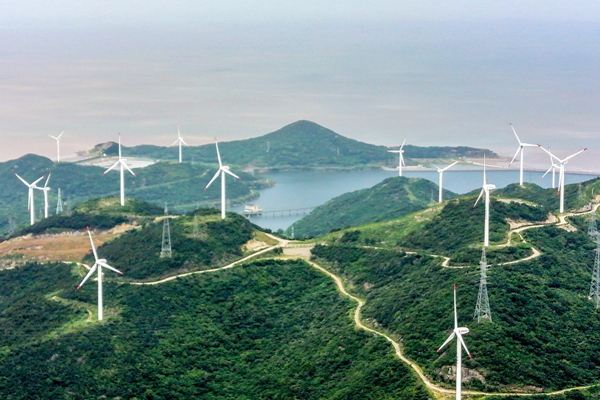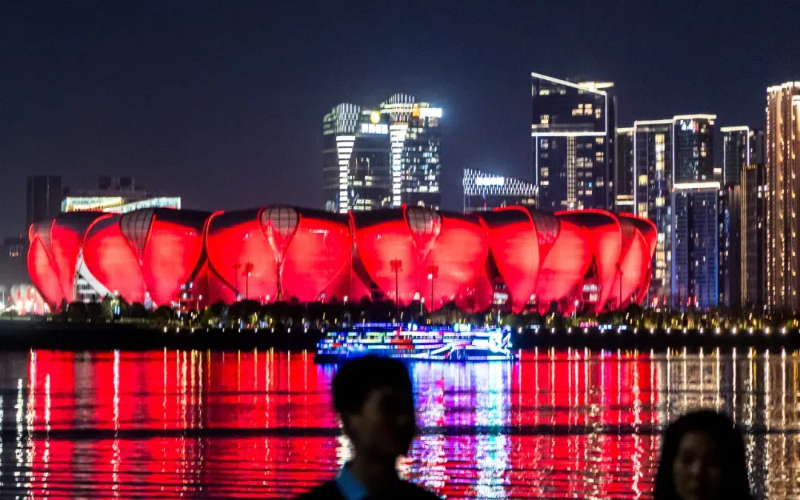Zhejiang publishes key indicators for low-carbon economy

A wind-power plant in Zhoushan, Zhejiang province. YAO FENG/FOR CHINA DAILY
Zhejiang authorities recently released statistics related to the province's low-carbon development over the 13th Five-Year Plan (2016-20) period.
The ratio of value added for the province's primary, secondary, and tertiary industry was 4.1 : 47.4 : 48.6 in 2015 and was 3.3 : 40.9 : 55.8 in 2020, reflecting the significant progress achieved in the shift toward the service sector.
In 2020, the installed power-generating capacity for clean-energy in Zhejiang was 52.9 million kilowatts, accounting for 52 percent of the province's total capacity. The shift toward ultra-low emission has been made in all of the province's large-scale coal-fired power generating units and coal-fired thermal plants.
In 2020, standard coal consumption in Zhejiang was 0.41 metric tons per 10,000 yuan of GDP, down 17.3 percent from 2015.
The proportion of eco-friendly civil architecture in Zhejiang rose from 86 percent in 2015 to 97 percent in 2020.
As much as 80 percent of buses and taxis in Zhejiang currently use clean energy. All buses operating in the urban districts of Hangzhou and Huzhou now run on clean energy.
Forest coverage rate in Zhejiang currently stands at 61.17 percent. The province is home to 18 national-level forest cities.
Huzhou became a national pilot zone for green-finance reform in 2017 and a pilot city for the coordinated development of green architecture and green finance in 2020.





 play
play